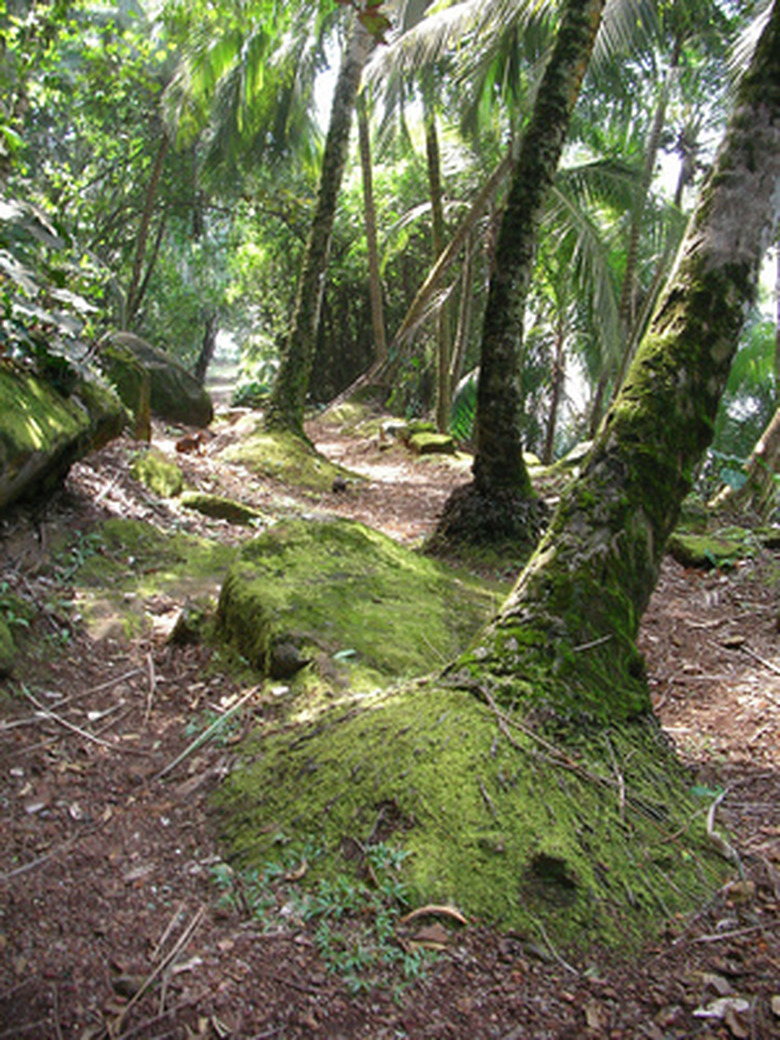Dominant Plants In A Tropical Rainforest
Rainforests have over 50 percent of the plants and animals found on the planet, amounting to around 30 million species. Tropical rainforests occur near the equator, and more than half of them are found in Latin America. They are a layered ecosystem with trees that form a canopy, trees that grow above the canopy and the "understory" below the canopy. Because much of the sunlight is blocked from lower layers, most of the organisms that live in this biome live in the branches of the trees that form the canopy. Biodiversity is key to rainforests, and many different species of plants live side by side.
The Orchids
The Orchids
Nothing suggests the tropical rainforest as much as the colorful orchid. More than 20,000 species of orchids come in a wide variety of colors, shapes and sizes. Common elements of all orchids are their three petals and sepals. Tropical rainforest orchids grow on the trunks of trees and are found high in the rainforest canopy; these are called epiphytes. Other orchids grow on the forest floor, on rocks or slopes with good drainage or on the banks of a small stream. Some orchid species found in the tropical rainforest include the apricot orchid, fairy bells and jewel orchid.
The Bromeliads
The Bromeliads
The bromeliads found in the rainforest are related to the pineapple family of plants. Interestingly, a bromeliad plant can be considered a little ecosystem because it is inviting to creatures of the forest who sometimes take up residence. The bromeliad has a thick, waxy leaf that forms an urn or bowl to catch rain. Bromeliads can hold gallons of water and provide a sustaining environment for animals such as frogs, salamanders and the larvae of mosquitoes and flies. Bromeliads can have colorful leaves and are used as attractive houseplants.
The Strangler Fig
The Strangler Fig
Strangler figs, or ficus trees, are considered "killer trees" and eventually wrap their roots around a host tree and suffocate it until the host dies. The strangler fig starts off as a seed in the high canopy of the rainforest, and its roots then attach to the forest floor. After surrounding its host tree, the fig grows a crown of foliage that overshadows the tree, preventing sunshine from penetrating. The strangler fig tree avoids competition for light, a valuable resource in rainforests, by using the host tree. The hollow trunk of the strangler fig is an enticing environment for animals, including birds, reptiles and rodents. The fig tree also provides fruit, which is eaten by primates and birds as well as humans.
Cite This Article
MLA
Penn, Sharon. "Dominant Plants In A Tropical Rainforest" sciencing.com, https://www.sciencing.com/dominant-plants-in-a-tropical-rainforest-12398561/. 21 July 2017.
APA
Penn, Sharon. (2017, July 21). Dominant Plants In A Tropical Rainforest. sciencing.com. Retrieved from https://www.sciencing.com/dominant-plants-in-a-tropical-rainforest-12398561/
Chicago
Penn, Sharon. Dominant Plants In A Tropical Rainforest last modified March 24, 2022. https://www.sciencing.com/dominant-plants-in-a-tropical-rainforest-12398561/
